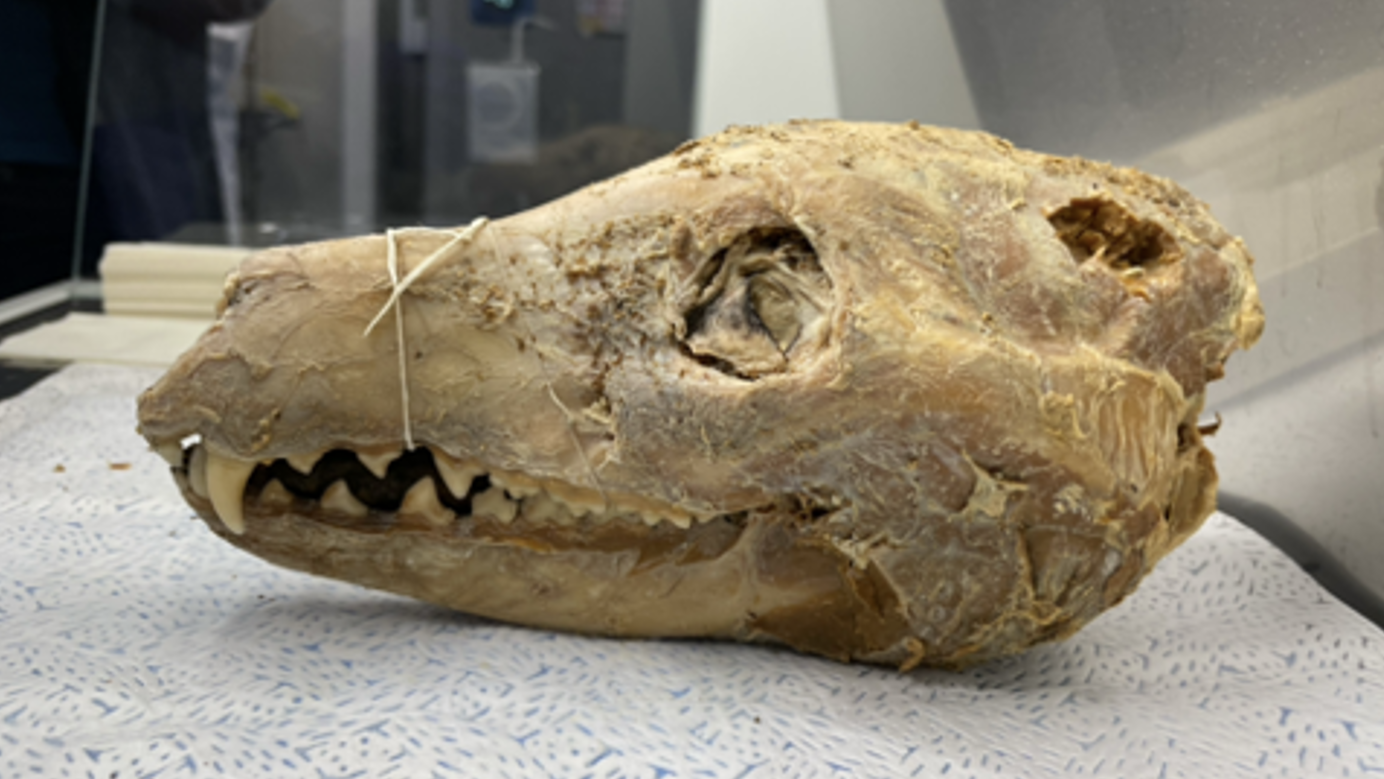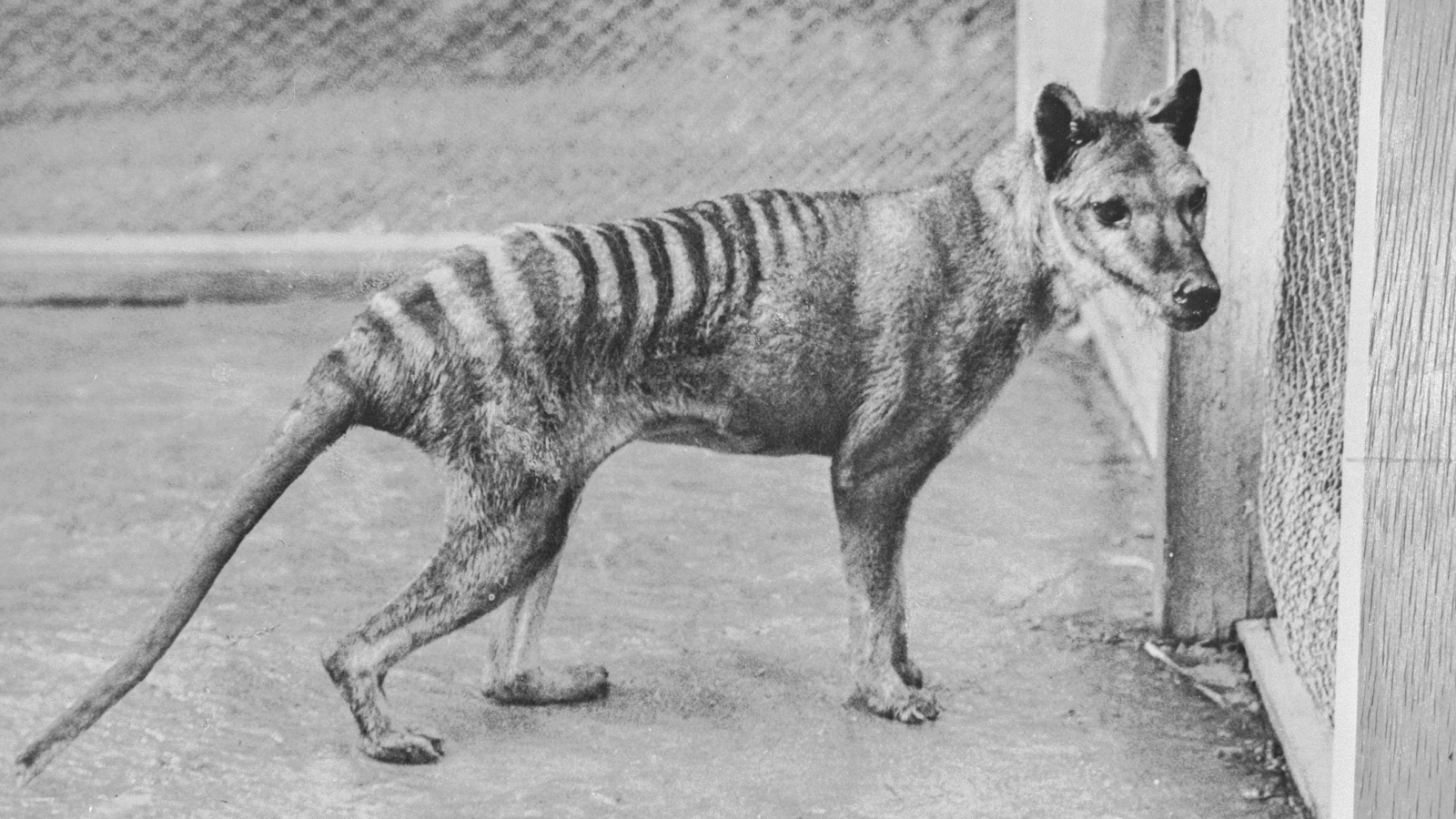Most complete Tasmanian tiger genome yet pieced together from 110-year-old pickled head
Researchers working with Colossal Biosciences have assembled a near-complete Tasmanian tiger genome and developed artificial reproductive technologies that could help de-extinct the species.

Scientists have assembled the most complete Tasmanian tiger genome to date from a century-old pickled head, providing a full DNA blueprint to potentially bring the extinct species back to life.
The breakthrough — one of several new advances in Tasmanian tiger de-extinction efforts spearheaded by the company Colossal Biosciences — was made possible thanks to a 110-year-old head that was skinned and preserved in ethanol. The exceptional preservation of this specimen enabled researchers to piece together most of its DNA sequence, as well as strands of RNA (a molecule that is structurally similar to DNA but has only one strand) that show which genes were active in various tissues when the animal died.
Until now, many experts believed it was impossible to reconstruct a full genome from historic samples, said Andrew Pask, a professor of genetics and developmental biology at the University of Melbourne in Australia whose team helped assemble the Tasmanian tiger genome. Turns out, "you absolutely can get a phenomenal genome from old samples," he told Live Science in an email.
Tasmanian tigers, or thylacines (Thylacinus cynocephalus) were carnivorous marsupials that went extinct in 1936 after decades of human persecution. Thylacines were apex predators that played an "absolutely critical role" in their ecosystem in Tasmania, Pask said. There is space to reintroduce the species and well-preserved specimens exist in museum collections and research centers worldwide, meaning de-extinction is achievable for this species.
Related: Long-extinct Tasmanian tiger may still be alive and prowling the wilderness, scientists claim
"The genome provides the full blueprint for deextincting this species, so having it complete and very high quality is a huge help to these efforts," said Pask, who sits on Colossal's scientific advisory board.
The newly assembled genome is similar in size to a human genome, consisting of 3 billion base pairs of nucleotides — the molecules that form the rungs of the DNA ladder. Forty-five gaps remain in the DNA sequence, which scientists hope to close in the coming months with further sequencing, according to a statement from Colossal shared with Live Science.
Sign up for the Live Science daily newsletter now
Get the world’s most fascinating discoveries delivered straight to your inbox.

Fragments of RNA discovered in the pickled head will enable researchers to detect genes that were switched on in different tissues when the thylacine was alive, helping them determine what the animal could taste, smell and see, and how its brain functioned. RNA is much less stable and more prone to damage over time than DNA, so its preservation "can help us understand the biology of the thylacine in a way we never thought possible," Pask said.
Colossal announced another breakthrough in its thylacine de-extinction project that has applications for the conservation of living species. A research team working on assisted reproductive technologies (ART) has found a way to trigger ovulation in the fat-tailed dunnart (Sminthopsis crassicaudata) — a small, mouse-like marsupial and the closest living relative of the thylacine. Ovulation in fat-tailed dunnarts produces many eggs simultaneously that researchers will inject the thylacine genome into once it is finalized, according to the statement. The company says it will also use fat-tailed dunnarts as surrogates to grow thylacine embryos.
The team is also working on an artificial uterus device to grow marsupial embryos. In a world-first, this device can now host embryos from start to midway through pregnancy.
"They are all huge breakthroughs," Pask said. "The development of ART for marsupials has major implications for captive breeding for endangered marsupials — but is also paving the way for us to create a living thylacine once we have the edited cells."

Sascha is a U.K.-based staff writer at Live Science. She holds a bachelor’s degree in biology from the University of Southampton in England and a master’s degree in science communication from Imperial College London. Her work has appeared in The Guardian and the health website Zoe. Besides writing, she enjoys playing tennis, bread-making and browsing second-hand shops for hidden gems.









